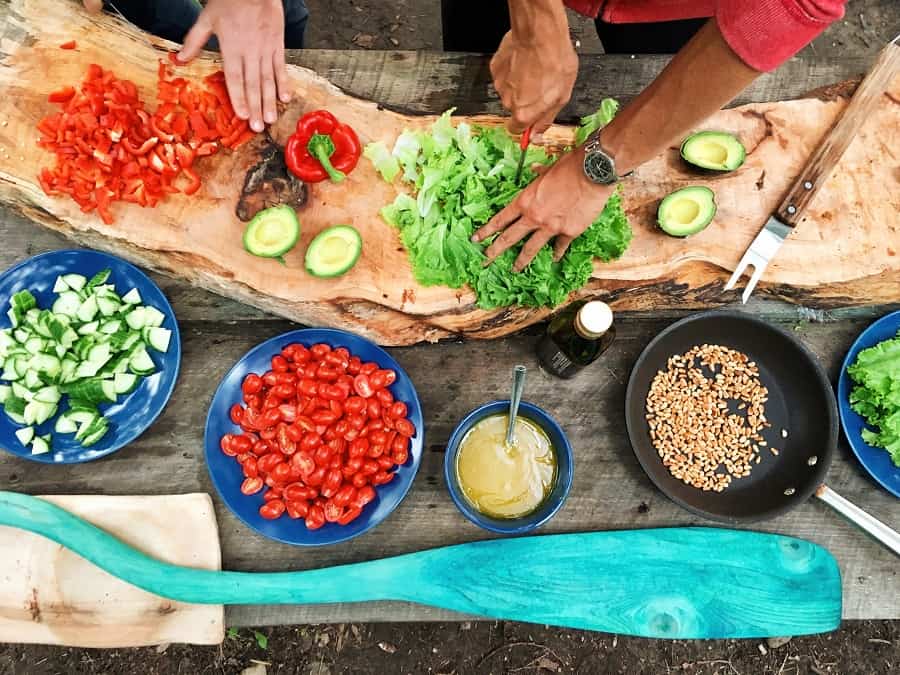A plant-based diet is usually considered restrictive by those who have never tried it. But for those of us who have made it a part of our life, we know it is far from. I actually eat a greater variety of foods now than when I ate a diet centered around meat.
A plant-based diet consists of whole plant foods from the following food categories:
- Whole grains
- Legumes
- Tubers
- Fruits
- Vegetables
- Nuts & Seeds
- Herbs & Spices
The following video will provide a quick review of the basic staples found in a healthy plant-based or vegan diet. It’s one of my earliest attempts at video production and editing so I apologize for the lack of quality:)
There are two basic characteristics that describe every food in this diet, they need to be whole, or at least minimally processed, and they need to come from plants.
Whole food describes natural foods that are not heavily processed. That means whole, unrefined, or minimally refined ingredients.
Plant-based means food that comes from plants and doesn’t include animal ingredients such as meat, milk, eggs, or honey.
Let’s dive into the specifics of each of the plant-based categories.
Whole grains
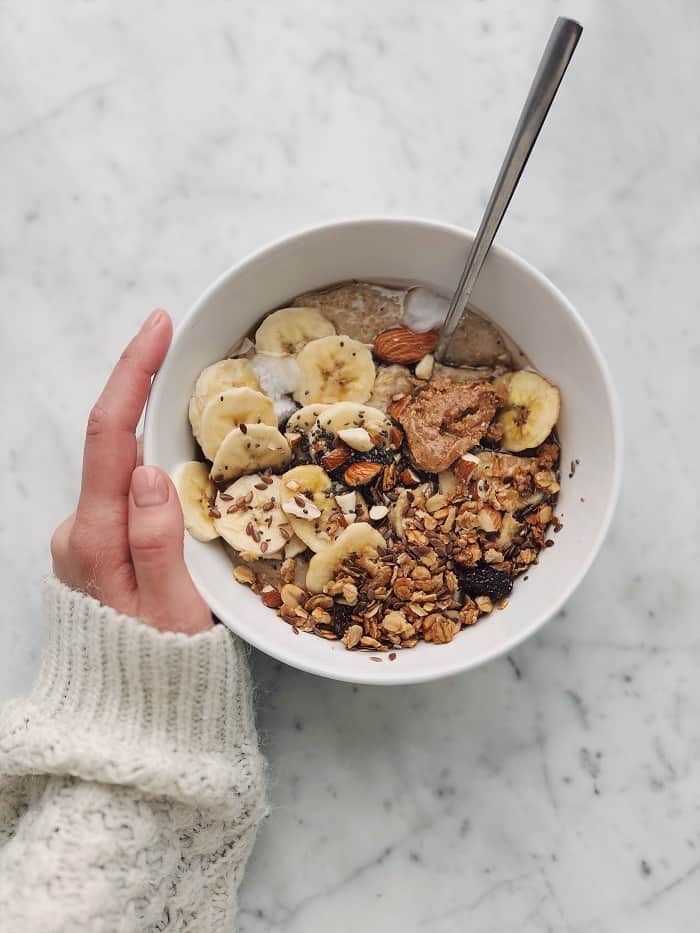
It is important to emphasize the word “whole” in this food group because the vast majority of grains in our modern supermarket have been drastically altered from their original form.
You will always receive the greatest amount of nutrition a food has to offer by consuming it in its most natural state.
For instance, you could purchase rice instead of rice noodles, or steel-cut oatmeal instead of oatmeal made from rolled oats, or even whole wheat bread instead of wheat bread.
There is a huge variety of grains available to most people. And each of them tends to be exceptionally cheap and tasty. You can use them in a variety of cooking styles and meals.
Some of my favorite, most nutritious grains are listed here:
- Oats
- Millet
- Quinoa (actually a seed:)
- Teff
- Rice; (basmati, jasmine, wild rice, brown rice, arborio, sticky rice, black rice, sushi rice, etc)
- Buckwheat
- Amaranth
- Maize
- Sorghum
I just thought I would mention that wheat, rye, barley, triticale, spelt, couscous, wheat berries, bulgur, semolina, and farro are all perfectly fine grains to use on a plant-based diet unless you have a gluten intolerance or sensitivity.
I eat a gluten-free whole-foods plant-based diet due to celiac disease, which is an autoimmune disorder triggered by the protein found in these glutinous grains.
If you have a gluten sensitivity I would also encourage you to stick to the bullet-pointed list for your grains.
For anyone who does not have an adverse reaction to gluten, there isn’t a ton of evidence showing that glutinous grains are harmful to the majority of the general population. So feel free to broaden your whole-grain horizon.
How to incorporate whole grains into your meals
Breakfast
I wake up nearly every morning to a huge bowl of steel-cut slow-cooked oatmeal. It takes all the work out of breakfast.
You just heat it in the slow cooker overnight in water with a little cinnamon or pumpkin pie spice if you want some extra flavor (and nutrition).
Then serve with some fresh fruit, seeds, nuts, homemade granola, coconut flakes, dried fruit, cacao nibs, etc. The possibilities are truly endless.
My personal favorite topping is a simple blend of chia, hemp, and ground flax seeds with fresh berries and pecans.
Lunch & Dinner
I tend to mix rice into nearly all of my lunch dishes. My quick and easy go-to’s are buddha bowls.
These are basically rice or some other type of grain with a salad on top. It’s super easy to incorporate legumes into this dish for some added nutrition as well.
My favorite Buddha bowl is a base of basmati rice and black beans with mixed greens, pumpkin seeds, and a variety of veggies, topped with salsa, and guacamole.
I’m usually still full from my breakfast and lunch that I don’t typically eat a third meal, but there are a million ways to incorporate grains into your dinners.
Such as with stir frys, vegetable pastas, burritos, rice curry, soups and stews with rice or noodles, and sushi.
Legumes
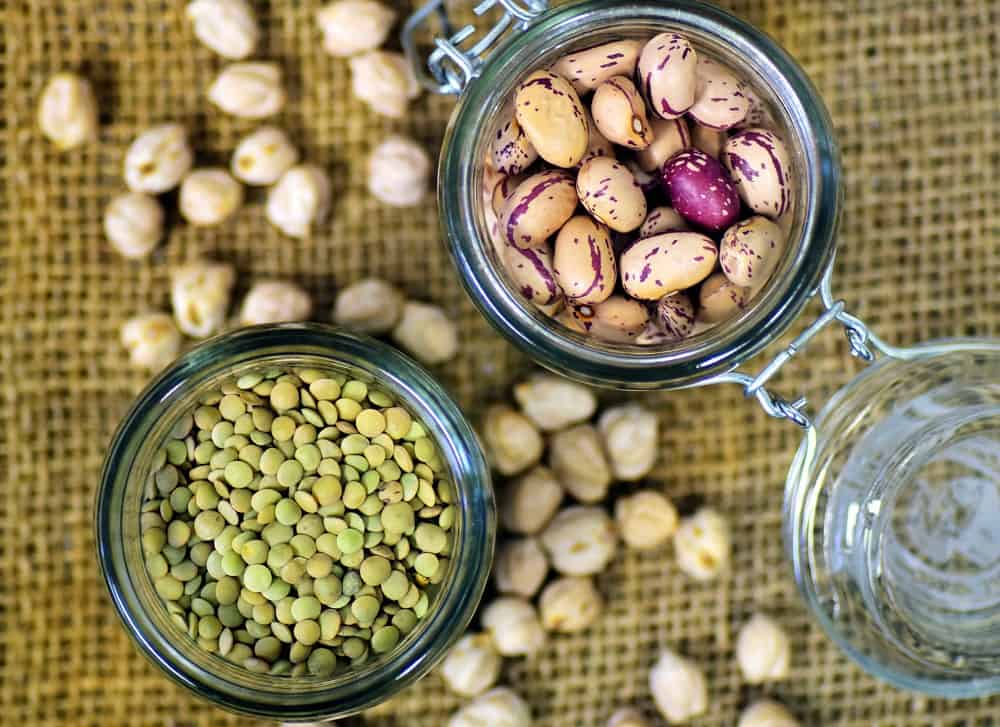
Legumes are terribly underrated when it comes to nutrition. They lower blood cholesterol, stabilize blood sugar, feed your healthy gut bacteria and keep your bowels regular.
They are also packed with B vitamins, calcium, phosphorous, zinc, magnesium iron, folate, fiber, and antioxidants.
Legumes also have a lot of protein making them perfect for the main course of any meal. I try to eat these nutritional powerhouses in most of my meals throughout the day.
The cheapest way to eat lots of legumes is to buy them dried. Beans take up to 12 hours to soak overnight before you can cook them.
But if you use a pressure cooker there is no soaking required. Although I still prefer to soak mine first.
As with whole grains, legumes are incredibly versatile, inexpensive, and have such a large variety.
Below is a list of my favorite, and most nutritious legumes:
- Beans, (chickpeas, kidney beans, black beans, fava beans, blackeyed peas, soybeans, cannellini beans. navy beans, adzuki beans, pinto beans, split peas, great northern beans, and lima beans)
- Lentils, (green, red, yellow, black, and french)
- Green/String beans
- Wax beans
- Peas
- Alfalfa
- Clover
- Peanuts
How to incorporate legumes into your meals
Breakfast
I live in a culture where breakfast tends to gravitate towards sweet-tasting foods like pancakes, waffles, muffins, scones, French toast, and doughnuts. The majority of the world, however, consumes savory foods for the first meal of the day.
When I am not pressed for time, I love heating up a bunch of beans to go with a plate of steamed mixed veggies.
During the workweek, however, I don’t have the luxury of getting my family ready for the day AND steaming my own veggies.
In those instances, I have to get a little more crafty by mixing navy or great northern beans into my oatmeal or eating a huge plate of raw veggies with black bean hummus at my desk when I get to work in the morning.
You could also spread hummus on some Ezekiel toast for another option.
Lunch & Dinner
Lunch and dinner are super easy to incorporate legumes. You could literally throw them into any dish and you wouldn’t even know they were there.
Most legumes have a wonderfully mild and almost nutty flavor.
Some of my go-to’s for legume-centered dishes are chili, soups, and stews, stir frys, tacos and burritos, pasta, curries, and Buddha bowls.
Tubers
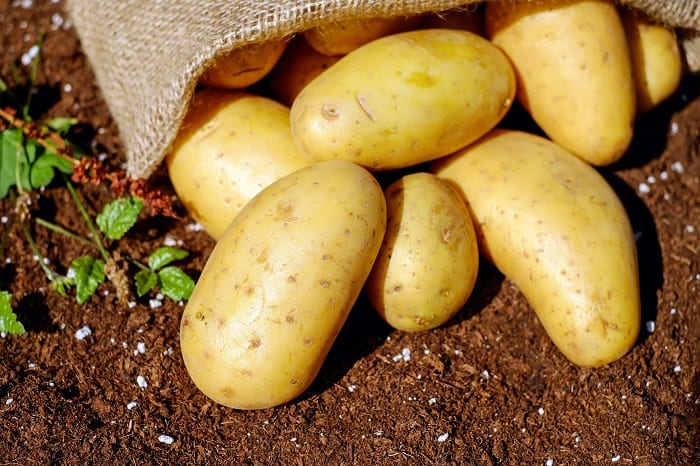
Tubers hold about a third of the number of carbohydrates found in grains, but they are still a significant source of this macronutrient. Much of the world’s populations use tubers as their main source of energy.
On a plant-based diet, the majority of your calories should come from tubers, grains, and other starchy vegetables. This will ensure adequate consumption of important carbohydrates.
Many people are convinced that starch is the enemy, when in fact starch is what many of the Earth’s longest-lived civilizations thrive off of.
For instance, the Japanese, Chinese, and other Asians eat sweet potatoes, buckwheat, and rice. T
he Incas in South America lived off of potatoes and the Mayans and Aztecs in Central America ate corn as their staple ingredient in many dishes.
The Egyptians in the Middle East ate mainly wheat.
All large populations of trim, healthy people throughout verifiable human history have obtained the bulk of their calories from starch.
Dr. John McDougall
Tubers also have a significant amount of vitamin A, Vitamin C, potassium, calcium, and carotenoids.
Some of my favorite, most nutritious tubers include the following:
- Beets
- Carrots
- Parsnips
- Sweet potatoes
- Turnips
- Radishes
- Rutabagas
- Horseradish
- Arrowroot
- Ginger
- Jicama
- Potatoes
How to incorporate tubers into your meals
Breakfast
Tubers are another mildly flavored plant food that can be mixed into meals in a variety of ways.
Sometimes I will boil potatoes and pile a bunch of steamed veggies on top with some nutritional yeast sprinkled all over the dish for breakfast.
I also like to eat raw carrots and radishes with hummus some mornings.
Lunch & Dinner
My absolute favorite way to eat sweet potatoes is by mixing them with kidney or black beans, then placing mixed greens, pumpkin seeds, salsa, and guacamole on top. This will make a great lunch or dinner.
For dinner, I might roast some carrots, turnips, rutabaga, and parsnips to put on top of a bed of mixed greens and top it all with some homemade oil-free dressing.
For something simple, I will roast a sweet potato and sprinkle some cinnamon on top.
If you prefer something light for dinner, try shredding some beets and carrots on top of a salad with some chopped jicama.
Fruits
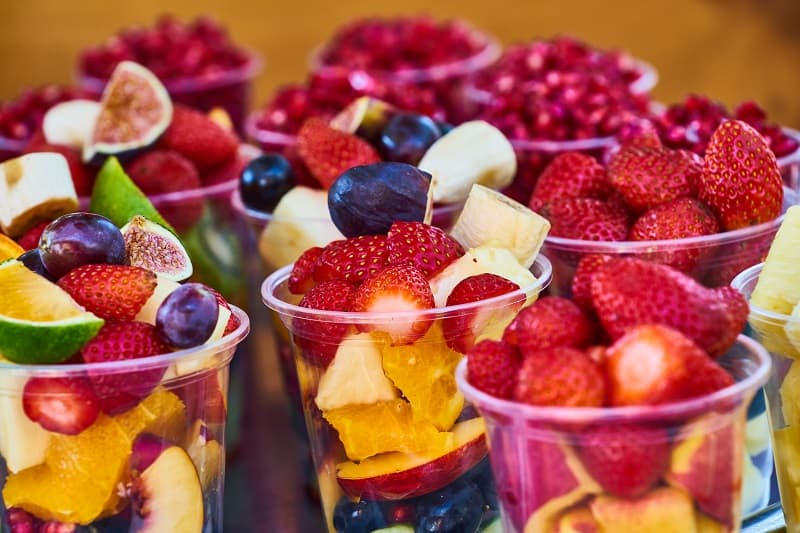
Fruit has been shown to be a great source of potassium, vitamin C folate, and fiber.
Dietary fiber from fruit helps reduce blood cholesterol levels and may lower risk of heart disease. Fiber is important for proper bowel function. It helps reduce constipation and diverticulosis.
Fiber-containing foods such as fruit help to provide a feeling of fullness with fewer calories.
People tend to make the false assumption the fruit is somehow harmful or fattening due to its sugar content. The sugar in fruit is vastly different from refined sugar or high fructose corn syrup.
The fiber bound to the sugar molecules in fruit makes it much more difficult for our bodies to break down.
Fiber slows the rate that the natural sugars are released into the bloodstream, preventing the spikes and crashes that might otherwise be experienced after eating a sugary treat.
On any given day I may consume anywhere from 3 to 12 servings of fruit. I have a big sweet tooth and I used to satisfy it DAILY with candy, sweetened coffee creamers, brownies, cookies, and heavily sweetened granola.
After switching to a WFPB diet I have completely overcome my sugar cravings. It wasn’t easy and it definitely didn’t happen overnight.
But as the years pass, refraining from refined foods of every kind has become easier and easier. Now I can walk by the candy aisle and the chocolate dish and my work without a second thought.
Historians say fruit actually evolved for human consumption. We developed a taste for sweets specifically to seek out brightly colored fruits and inadvertently spread their seeds.
It is thought that we also developed color vision specifically to be able to locate these colorful foods.
That is why carnivores such as cats and dogs can’t differentiate between most colors, only shades of color. They have no reason to have the ability to locate brightly colored plants, so they never developed this adaptive mechanism.
Here are some examples of phytochemical and antioxidant-rich fruit:
- Berries (blueberries, strawberries, blackberries, raspberries, mulberries, boysenberries, acai berries, and goji berries grapes)
- Melons (watermelon, muskmelon, canteloupe, honeydew)
- Apples
- Pears
- Cherries
- Citrus fruits (oranges, lime, lemon, grapefruit, kumquat, clementine, tangerine)
- Kiwi
- Pineapple
- Bananas
- Papaya
- Avocado
- Mango
- Apricot
- Plum
- Pomegranate
- Lychee
- Jackfruit
How to incorporate fruit into your meals
Breakfast
As mentioned in the whole grains section, the typical Western diet tends to build breakfast around sweetly tasting foods. So breakfast is a great place to add all sorts of fruit.
Adding berries, papaya, mango, or apples and cinnamon to your morning oatmeal is a great place to start. Otherwise, you can mix and match different kinds of fruit into a smoothie of your choice.
Bowls of fresh fruit with granola are also a great option.
Lunch & Dinner
Fruit provides a great topping on salads. I like to use berries, peaches, mandarin oranges, and kiwi.
Sometimes I’ll get creative and use a cup or two of one of those frozen mixed packages of fruit on top of my salads or in smoothies.
These are a great time-saver, and they tend to be fresher than the fruit found in the produce section since they are frozen immediately after being harvested.
As opposed to being picked then shipped across continents or perhaps even across oceans before landing in your local supermarket.
I may also eat a piece of fruit at the end of a meal as a dessert, or as snacks throughout the day. These are natural convenience foods. Especially those with skins such as apples, pears, bananas, and oranges.
You can bring these anywhere without prior preparation. Just grab and go.
Vegetables
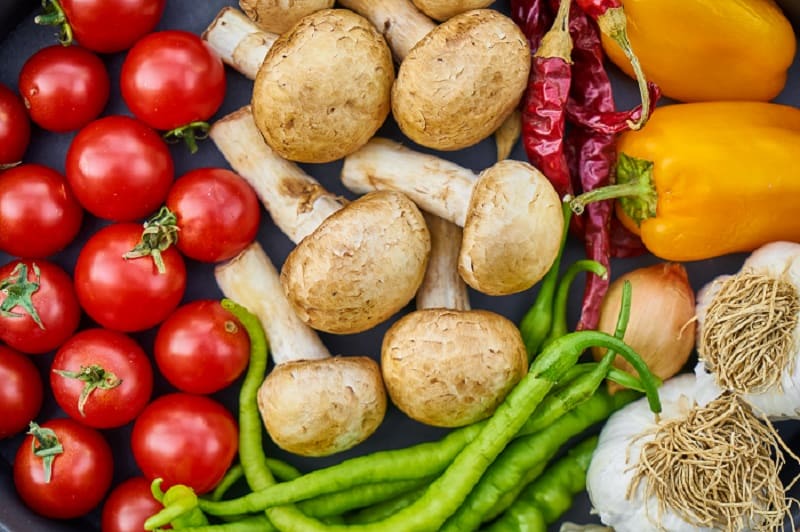
Veggies have the lowest caloric content of any food. Nonstarchy vegetables, like greens, celery, peppers, cucumbers, and broccoli provide a mere 100 calories per serving!
You could literally eat them all day and never meet your total daily calorie needs. Just chewing and digesting these foods takes a significant amount of energy. That’s why they are so great for sustainable weight loss and weight management.
The fiber content is also helpful with weight management due to the satiety, or feeling of fullness that is brought about by vegetable consumption.
Veggies even provide your gut flora with the necessary nutrients. The most common ones are vitamins A & C, potassium, and folate.
Veggies also have a low glycemic load, meaning they don’t cause large spikes in blood sugar when absorbed.
Foods with a low glycemic load have been shown to have preventative properties against metabolic disorders such as diabetes. These foods will also help reverse diabetes in those already suffering from the disorder.
Some vegetables you will commonly see on a plant-based diet are shown below:
- Bell peppers
- Tomatoes
- Cucumbers
- Brussel sprouts
- Broccoli
- Cauliflower
- Kale
- Collard greens
- Carrots
- Celery
- Cabbage
- Lettuce
- Spinach
- Mushrooms (actually a fungus)
- Onions
- Leeks
- Garlic
- Asparagus
- Watercress
- Okra
- Artichoke
- Pumpkin
- Arugula
- Zucchini
How to incorporate vegetables into your meals
Breakfast
If you’ve never considered having vegetables for breakfast, I highly recommend watching Chef AJ’s video below:
I never would have been able to think outside my American breakfast ideal without the help of this talented plant-based chef.
Since I saw this video a couple of years ago, my morning palate has dramatically expanded. Being confined to sweets every morning is so dull compared to the wide array of available vegetable options.
You can stir fry any combination of veggies while adding a starch such as rice, potatoes, or beans and this will give you a filling and perfectly nutritious breakfast.
A plate of steamed veggies is another quick option for those busy work weeks.
Sometimes I’ll just eat a large bag of mixed veggies, such as radishes, cucumbers, carrots, and broccoli with black bean hummus for my morning meal.
Think outside the box! Taste buds are acquired and adaptable.
Lunch & Dinner
The morning suggestions for veggies can apply to the remaining meals of the day, as well. Vegetables are incredibly versatile.
You can make noodles out of squash and zucchini. You can make mashed potatoes out of cauliflower.
You can even mix blended steamed cauliflower with nutritional yeast to make a cheese substitute. The possibilities are truly endless.
Vegetable soups, chilis, burritos, and casseroles are quick and easy substitutes for all you plant-based beginners out there.
It may take some time to adapt your taste buds to this lifestyle, but it is truly worth it!
After a few months on this diet, you will be able to taste all the natural small amounts of fat, sodium, and sugar in veggies without having to add a bunch of artificial flavoring to achieve the same impact.
Nuts & Seeds

This is one of the most overlooked areas of plant-based eating. Nuts and seeds can provide the healthy fats we require from our diet.
They have a particularly important fatty acid called alpha-linolenic acid which our bodies use to convert into long-chain fatty acids that ultimately result in our DHA supply.
DHA is necessary for proper brain maintenance, function, and development, among other things.
Most people have been swayed by the fishing industries that the only way we can obtain DHA is through fish sources.
This simply is not the case seeing as fish obtain their DHA through consumption of sea vegetables containing alpha-linolenic acid which is then converted by the fish into DHA.
You can get the same benefit by getting your fatty acids directly from the vegetative source as opposed to the secondary source which is contaminated with harmful metals and industrial waste, (even when they are purified to reduce these materials).
Nuts and seeds are also great sources of magnesium, potassium, calcium, plant iron and zinc, and contain vitamins B1, B2, B3, and vitamin E.
Nuts also contain high amounts of fiber and protein.
There is a rather large caveat when it comes to this category of plant foods.
You see, although they are high in monounsaturated and some polyunsaturated fats, they are still high in total fat. In fact, nuts are the most fattening food in the plant kingdom.
This is a great item to sprinkle on top of meals. I would not recommend eating them to satiation, however.
Eating handfuls of nuts out of the bag, for instance, can put upwards of 1,200 calories in your stomach before you even realize how much you’ve eaten.
Thankfully, these fat calories are only partially absorbed and stored as body fat.
Some nutritious nuts you should include on a plant-based diet are as follows:
- Macadamia nuts
- Brazil nuts
- Almonds
- Pecans
- Walnuts
- Cashews
- Pistachios
- Pine nuts
- Peanuts (actually a legume:)
- Hazelnut
- Chestnut
Some of the typical seeds you should eat regularly are below:
- Pumpkin seeds
- Chia seeds
- Hemp seeds
- Flax
- seeds
- Sesame seeds
- Sunflower seeds
How to incorporate nuts and seeds into your meals
Breakfast
Seeds and nuts are great for spreading on top of oatmeal and smoothies.
They can also be mixed in with granolas and breakfast cereals. Some prefer to blend nuts and seeds into butters for spreading on top of toast or fruit.
Nut butters are absorbed and utilized differently by the body than when the nuts and seeds are consumed whole.
They tend to be absorbed more quickly leading to more efficient fat storage.
Lunch & Dinner
Nuts and seeds are perfect for adding creamy textures to dips and dressings. Just soak prior to blending.
You can also toss these into a stir fry or any plant-based concoction, really.
As with most plant-based foods, nuts have such a mild flavor that they tend to go well with just about anything.
Herbs & Spices

The health benefits provided through the consumption of herbs and spices can be charted back to biblical eras.
Many are so useful that they have been deemed medicinal and are used for such ailments as high blood pressure, depression, inflammation, and weight loss.
Garlic, cardamom, cinnamon, curcumin, ginger, and cayenne pepper consumption are used in treating high blood pressure.
St. Johnson’s wart is notoriously used to reduce depression.
Turmeric is known for its anti-inflammatory properties. Cumin and saffron have been shown to result in measurable weight loss.
Some other benefits of using herbs and spices in your cooking include anti-diabetic effects, immunity-boosting, improved cognitive function, and pain reduction.
Consider using some of the following herbs and spices in your plant-based cooking:
- Turmeric
- Cinnamon
- Cayenne Pepper
- Cumin
- Black Cumin
- Saffron
- Basil
- Oregano
- Thyme
- Chili powder
- Garlic powder
- Onion powder
- Rosemary
- Chives
- Nutmeg
- Mint
- Tarragon
- Cardamom
- Marjoram
- Curry
- Dill
- Ginger
- Parsley
This list could go on and on, but I will let you discover all this plant category has to offer on your own.
How to incorporate herbs and spices into your meals
Breakfast
I like to blend my oatmeal with a pumpkin pie spice that contains cinnamon, cloves, nutmeg, ginger, and sometimes allspice.
You can also blend this mix into your smoothies.
I have also heard of people adding turmeric and black pepper to their morning smoothies.
Lunch & Dinner
Mix and match your foods with your seasonings. I never remember what goes good with what, so I am constantly trying different blends.
I know curry is great for Thai and Indian dishes, while cayenne pepper, cumin, and chili powder go great for Mexican cuisine. For Italian seasonings, I typically use thyme, oregano, basil, and parsley.
But again, mix these up. Try different combinations.
Garlic, black pepper, and onion powder are my go-to’s. I use those on almost everything.
I like to steam huge plates of mixed veggies and sprinkle them with one or two different unusual spices just to keep things interesting. Mrs.
Dash is a nice brand of seasoning that provides salt-free options, also.
Get creative! Let me know what are some of your favorite herb and spice combinations in the comments. I’m always interested in expanding my cooking repertoire.

